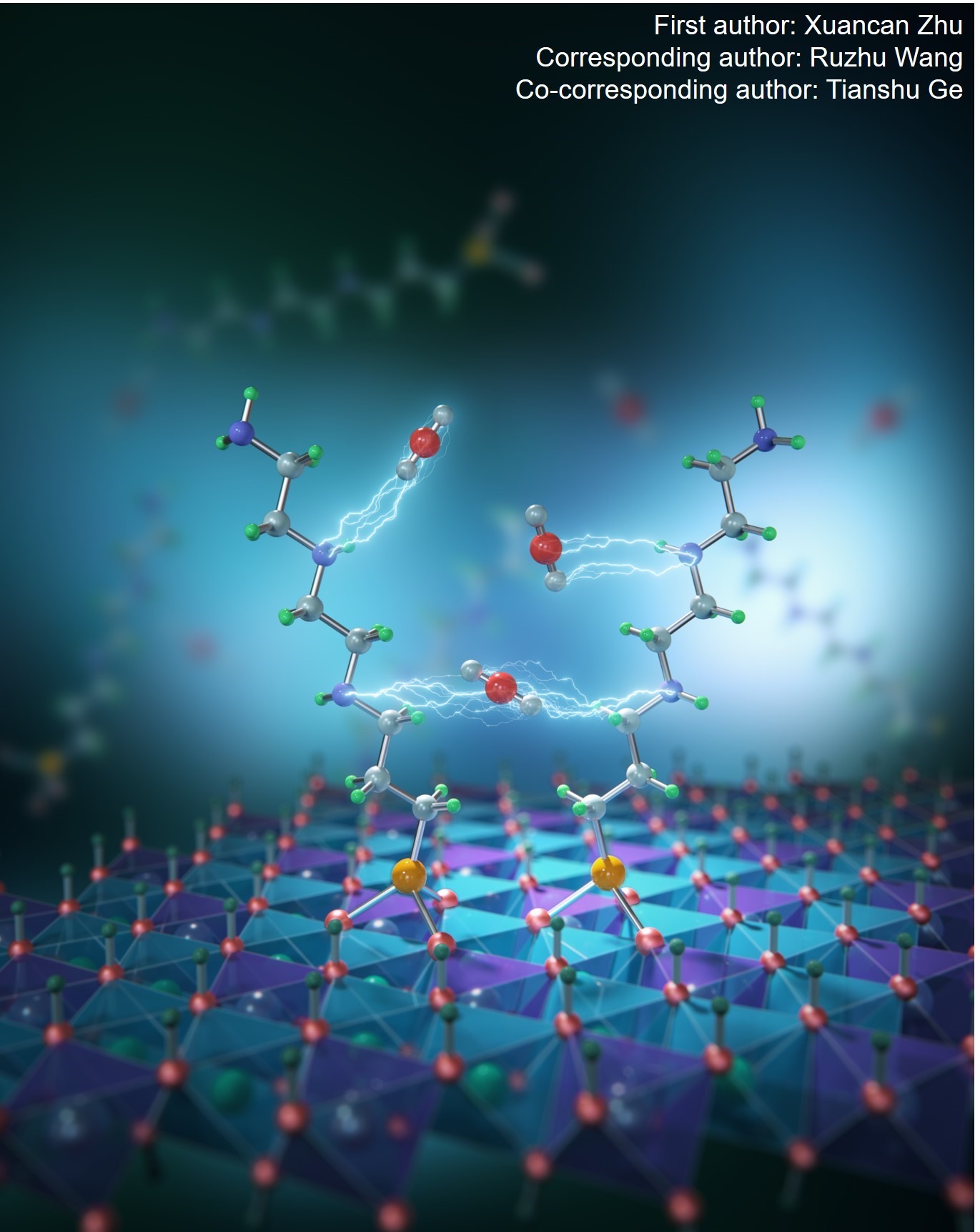Recently, one review paper entitled“Recent advances in direct air capture by adsorption”was published at Chemical Society Review (IF = 60.615). This paper was finished by researchers from the Energy-Water-Air interdisciplinary innovation team ITEWA at School of Mechanical Engineering, Shanghai Jiao Tong University, and collaborators from University of Oxford, Hong Kong University of Science and Technology (Guangzhou), and Karlsruhe Institute of Technology. This work benefits researchers concerned abbm out global energy and environmental issues, and delivers perspective views for further deployment of negative-emission technologies. The first author is Xuancan Zhu, an Assistant Professor at the Institute of Refrigeration and Cryogenics, and the corresponding authors are Prof. Ruzhu Wang and Prof. Tianshu Ge.
The concept of direct air capture (DAC) is now being widely recognized as a necessary negative emission technology to achieve a stringent 1.5 °C temperature target. Significant progress has been made in adsorption-based DAC in recent years: Amine-functionalized porous materials are the most widely studied DAC adsorbents due to their high tolerance to moisture, low energy requirement for regeneration, and amine groups having strong affinity towards CO2. Reliable shaping methods such as pelleting, hollow fibering, granulation, extrusion, 3D printing, and electrostatic spinning have been tested to fabricate structured DAC adsorbents with reduced mass transfer resistance. Understanding the influence of water on CO2 adsorption under ultradilute conditions is now clearer thanks to the development of in situ characterization techniques and material simulation tools. The thermal, hydrothermal, and chemical stabilities of DAC adsorbents upon exposure to high temperatures, oxygen, dry CO2, and steam are largely improved. Adsorption-based DAC has been coupled with many carbon storage and utilization technologies.

Schematic diagram of amine-functionalized material adsorbing carbon dioxide from air
This review provides an exhaustive description of materials development, adsorbent shaping, in situ characterization, adsorption mechanism simulation, process design, system integration, and techno-economic analysis of adsorption-based DAC. Adsorption-based DAC has experienced rapid development during the last decade, especially through the extensive exploration of amine-functionalized porous silicas, zeolites, metal-organic frameworks, carbons, resins, and layered double hydroxides as air capture materials. At the same time, a better understanding of the correspondence of the structure, functionalization, and properties of supports is required. To improve the technical feasibility of DAC, it is necessary to develop an efficient gas–solid contactor that combines adsorbent research and separation processes. Additionally, systematic and in-depth techno-economic analyses of the large-scale application of DAC via adsorption are still lacking.
The key metrics for evaluating the effectiveness of DAC adsorbents include the CO2 selectivity of the adsorbent in the presence of other gas compounds, CO2 working capacity of the adsorbent during adsorption–desorption cycling, adsorption and desorption kinetics, energy required for the cycle or regenerative adsorption, chemical stability, mechanical stress robustness of the adsorbent during long-term cycling, and performance over a wide range of temperatures and humidity levels, as well as the economic and environmental viability of the adsorbent in the cradle-to-grave full life cycle assessment. The final evaluation of adsorbents requires the analysis of the material structure (e.g., particles, fibers, and monoliths) in a full-scale process, possible cycle configurations (e.g., temperature, pressure, and concentration changes), and adsorption unit configurations (e.g., fixed-bed, fluidized-bed, and rotating-bed). New materials, devices, and architectures are likely to be developed collaboratively to meet the current and future carbon-capture needs.
This work was supported by the National Natural Science Foundation of China (52006135), the Shanghai Agricultural Science and Technology Program (2022-02-08-00-12-F01176), the International Science and Technology Cooperation Project (20160712800), and the Science and Technology Commission of Shanghai Municipality (21DZ1206200). ITEWA was founded and led by Prof. Ruzhu Wang in 2018, focusing on cutting-edge basic scientific and technological issues in energy conversion and efficiency, water, and air treatment, achieving integrated solutions at the material, device, and system levels through interdisciplinary approaches, thus driving breakthroughs in relevant technology fields. ITEWA published nearly 30 papers in recent years in high-impact journals such as Joule, Energy & Environmental Science, Advanced Material, Angewandte Chemie-International Edition, Matter, ACS Central Science, ACS Energy Letters, and Nature Communication.
Paper Link: https://doi.org/10.1039/D1CS00970B

